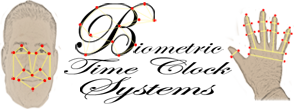Biometrics is the process by which a person’s unique physical or other characteristics, such as behavior, are recorded and stored so they can be used for identification or verification. Common types of biometric technology include fingerprints, hand geometry, DNA, hair, facial recognition, eye (iris and retina recognition) and voice recognition.
The first step in using a biometric system is the collection or enrollment process. This is where biometric data from an individual is captured by a sensor or sensors. The next step is extraction. This is where a signal processing algorithm takes the digital data and creates a template. Most systems do not store an actual image, such as a fingerprint or face image, rather a mathematical formula (algorithm) is used to convert that image into a number. It is this number that is stored in the database. Comparison is the third step. This is where the biometric system measures the likeness of a template to those already stored in the database in order to find a match. The final step in the process is the decision phase. This is where the system decides if there is indeed a matching template in the database.
As previously mentioned, a biometric system can be used for identification or verification. Verification is the process by which an individual presents a biometric profile that is compared against a profile already in the system in order to establish a match. This is commonly thought of as a 1-to-1 matching system. This is the type of system we use for the hand geometry biometric time clock systems we provide. Identification is the process by which a biometric profile from an unknown individual is compared against a database of biometric profiles in order to find a match. This is known as a 1-to-n or one-to-many system, where n is the total number of profiles in the database. This is typically used in forensic analysis by law enforcement for example.
The performance of a biometric system can be measured by the false acceptance rate and the false rejection rate. The false acceptance rate is the probability that the system incorrectly matches the biometric input to a template in the database when it should not. The false rejection rate is the probability that they system will fail to find a matching template when it should. Obviously, the lower both of these rates, the more accurate and reliable the biometric system will be. Our biometric time clocks have very low rates of false acceptance and false rejection.
Another very important measure of performance is the speed at which the biometric system will verify or identify the profile. Our biometric time clocks will verify a user in less than one second. This is important because you don’t want long lines to build up at the clock at the start or end of a shift.
Independent studies have shown that companies using a biometric time clock system can save an average of 2.2% on their gross annual payroll versus a traditional computerized time keeping system. This translates into a large amount of money saved.
Give us a call today. We are happy to answer any of your questions and give you a free online demonstration of our time & attendance software products.
